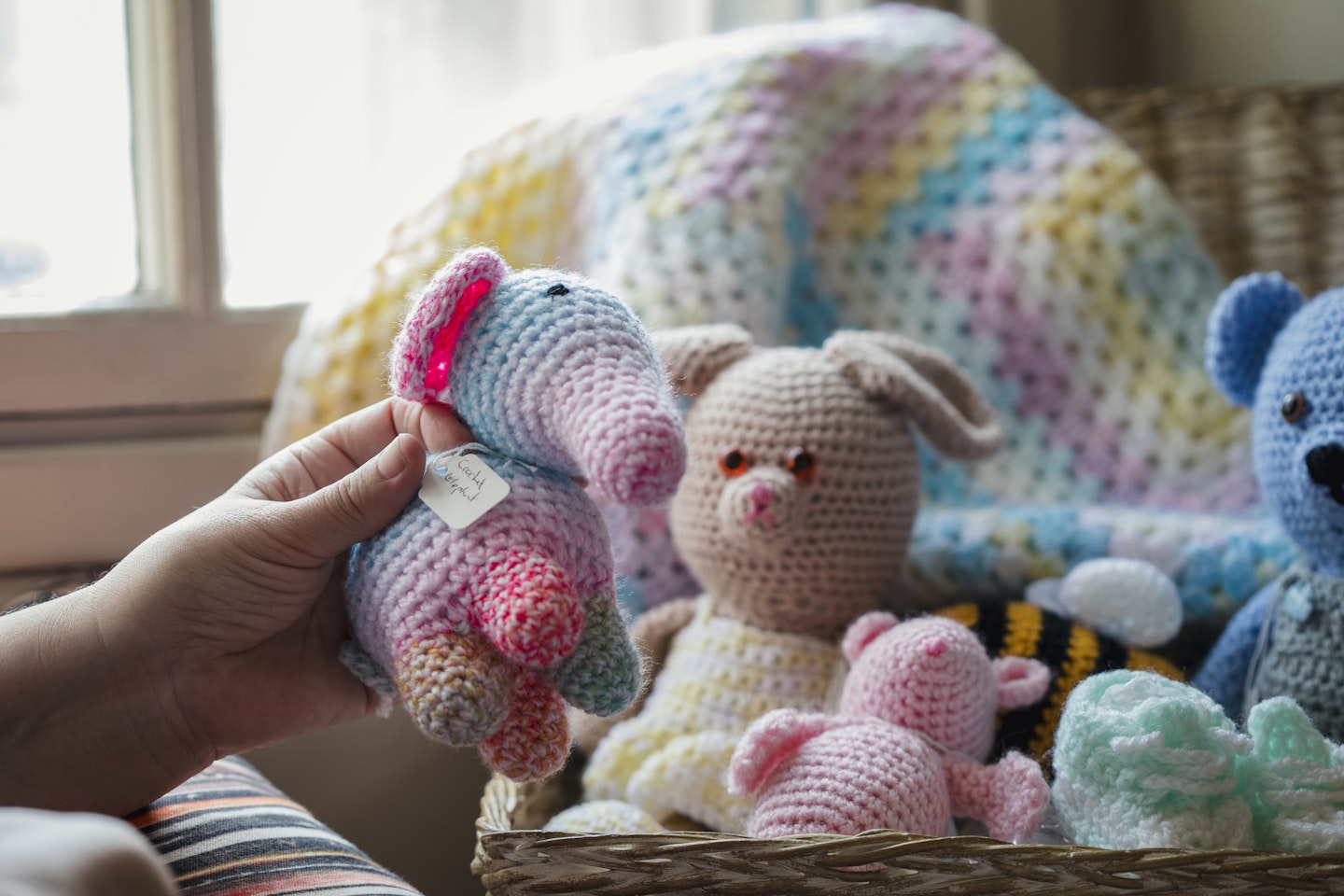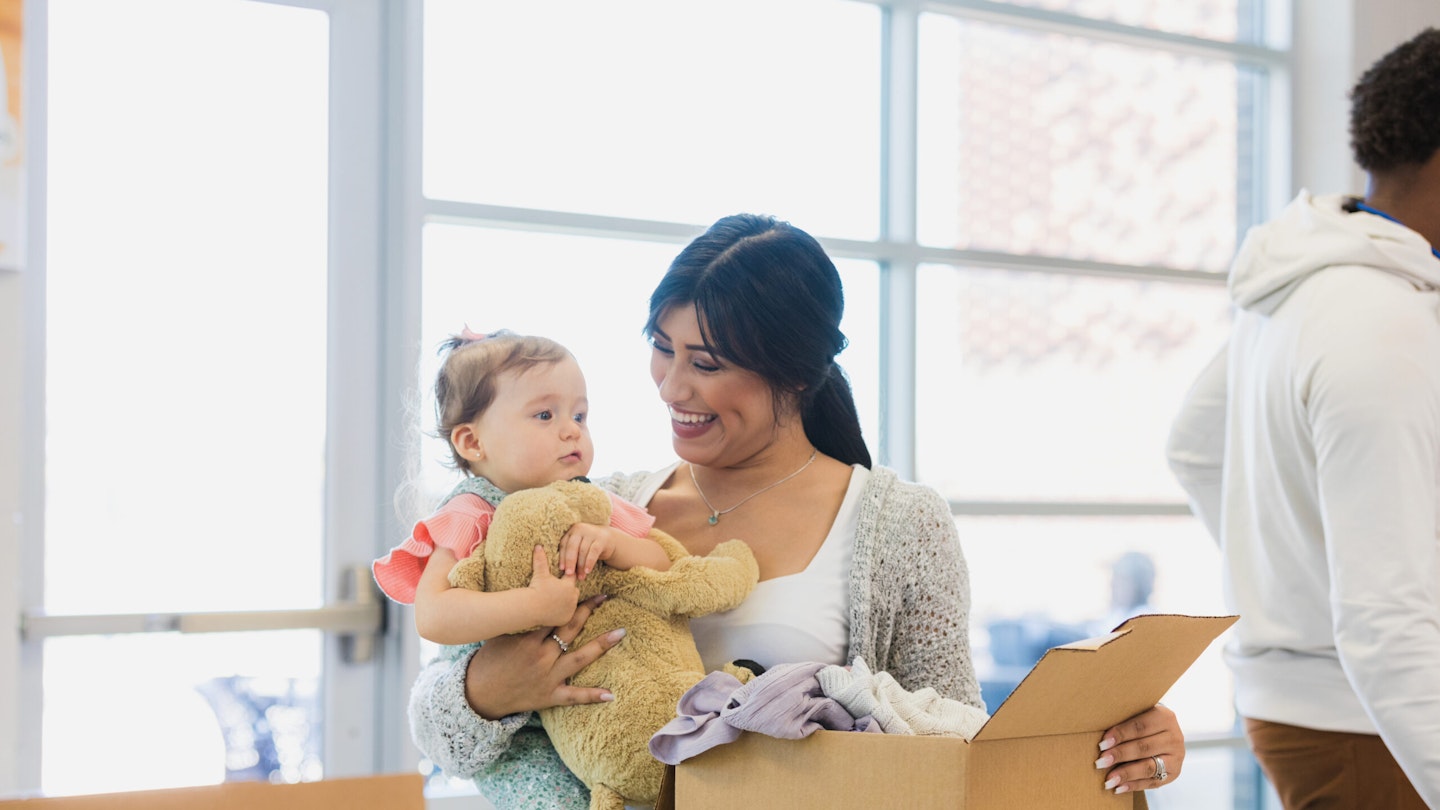Toys play an important role in your baby and toddler’s life; they can provide hours of endless entertainment and can also help develop those important skills. In 2018, we spent £3.3 billion on new toddler and baby toys, but according to Whirli, the toy subscription service, 61% of children’s toys end up being unplayed with.
Not only are second hand toys a great way to help cut down on waste, but they’re a more affordable option too. After all, it’s not always necessary to buy a brand new sparkly toy for our little one if there’s a second-hand one in perfect condition looking for a new loving home. But are second hand toys safe to buy and what do we need to consider as parents when buying them?
Read on for our guide to buying second-hand toys…
Toys you can buy second-hand
Charity shops sell a mixture of soft, books and battery operated toys, but it’s worth noting that they don’t always check whether these toys are still working, especially if the items were handed in without batteries. It’s therefore best to make sure you check yourself before purchasing. There are also online stores, such as Ebay, Etsy, Preloved and Gumtree which sell second-hand toys and should clearly state their condition. If you’re unsure, you can always drop them a message.
How much are second-hand toys?
Second-hand toys are of course cheaper than buying a toy brand new, as it’s likely to have a little wear and tear. The cost however will really be down to the seller and the condition of the toy, but it shouldn’t be the same as it would be in a store, if it is, avoid! Second-hand toys sold on online retailers, like Ebay, will cost more than buying a second hand toy from a car boot sale or charity shop.
Are second-hand toys safe?
In 2018 a study published in Environmental Science and Technology, found some second-hand toys could pose a health risk to children as they weren’t meeting safety-guidelines. The study tested 200 used plastic toys found in thrift shops, nurseries and homes across the south west for nine hazardous elements and 20 of these toys were found to have traces of all nine elements. The toys which failed the most were lego bricks from the 70s and 80s. The chemicals found in these toys were classed as ‘toxic’ if children were exposed to them over a long period of time, and even more so if they put them in their mouth.
Dr Andrew Turner from the University of Plymouth, who conducted the study said: "Second-hand toys are an attractive option to families because they can be inherited directly from friends or relatives or obtained cheaply and readily from charity stores, flea markets and the internet."

He continued: "Consumers should be made more aware of the potential risks associated with small, mouthable and brightly coloured old plastic toys or components.”
Of course, second-hand toys aren’t going to have the same safety assurance as those bought brand new. However, Mark Gardiner, of the Chartered Trading Standards Institute, advises that parents should weigh up the risks, especially when giving their children toys that are very old and could have also mechanically deteriorated over time.
Many people have bought plenty of perfect second-hand toys, so all we can really do is make sure that we’re extra vigilant when looking at buying a second-hand toy.
Below are some things you should look out for:
• Keep a close eye on any lego bricks from the 70s or 80s, as these were the toys which failed the most in Dr Turner’s study.
• Make sure you clean your second-hand toy before handing it to your child. Read our guides on how to clean bath toys, wooden toys and soft toys.
• Check the toy with small parts and do a double check over for loose parts. The last thing you want is these falling or breaking off and ending up in your little one’s mouth.
• Err on the side of caution when it comes to painted toys. New toys should be made with non-toxic paint. If you’re worried at all that the toy has been finished with a lead-based paint you can buy a test kit to check. If the paint is flaking off, it’s also best to leave it.
• Safety marks you can look out for on toys include: the Lion Mark and the CE mark. The Lion Mark was created by the British Toy and Hobby Association in 1988 and it symbolises toy safety and quality. The CE mark is required by law to be on all toys sold in the EU and means the toy meets the safety requirements of the European Toy Safety Directive. However it’s important to note the CE mark is just a trading standards mark, not a safety or quality mark, so keep an eye out for the Lion.
Where you can buy second-hand toys
• Etsy
• Gumtree
• Oxfam online)&No=0&Nf=&Nrpp=30){href='https://onlineshop.oxfam.org.uk/toys-games/category/toys-games?N=528193467&Ns=product.creationDate|1&Nr=AND(product.active:1,NOT(sku.listPrice:0.000000))&No=0&Nf=&Nrpp=30' target='_blank' rel='noreferrer noopener nofollow'}
• Charity shops
